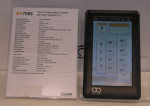
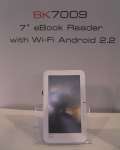
They will be in production in march.
I’m only going to show you a few of the ereaders, basically just the ones that are actually new. All have either a 5″ or 7″ LCD screen and none have Wifi or a touchscreen. The quality of the screen might differ, though. The pair of 5″ ereaders in the third picture are much the same device with only cosmetic differences separating them from my Elonex 500EB. And the 7″ ereader in the 4th picture has only cosmetic differences from the Elonex 700EB Gajah lent me.
All the following ereaders (except the Kindle clone and the tablets) are currently in production.
Gajah also brought a couple ereaders with 6″ E-ink screens. The Kindle clone is only a mockup, though.
I like all their ereaders, but I just love what they did with the interface on the BK 7009 Android tablet.
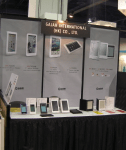
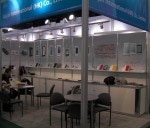
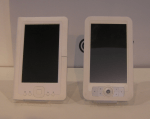
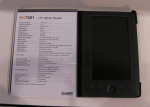
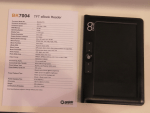
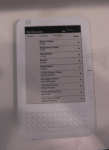

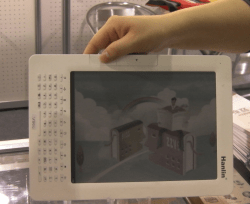
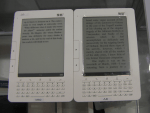
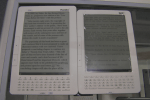

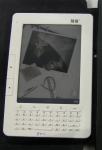



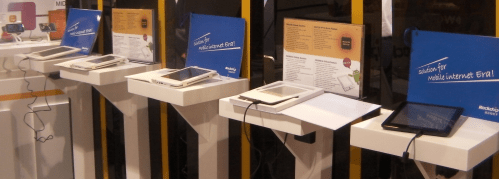
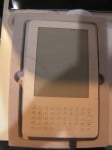
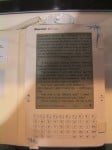


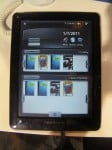
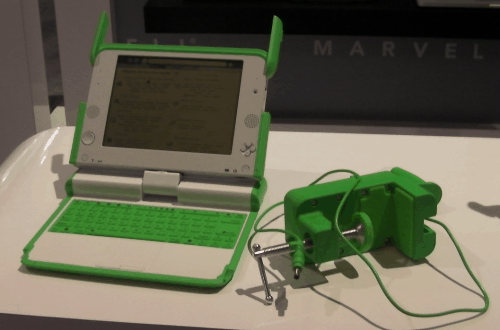
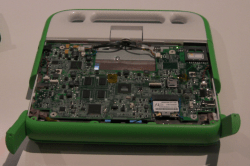


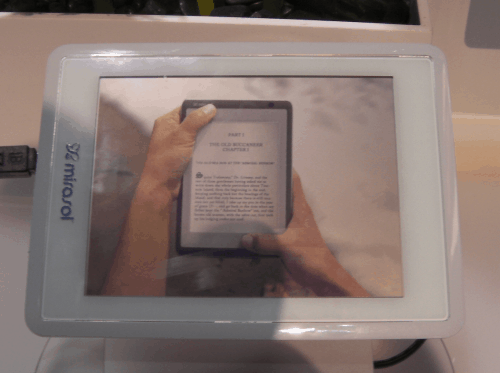
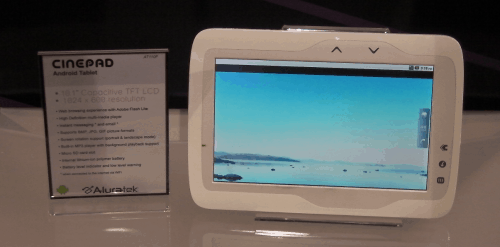
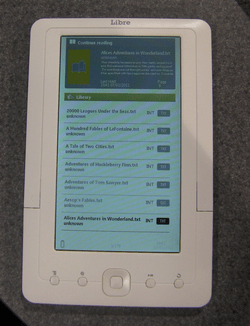 Aluratek also have a new based on a 7″ (480×800) LCD screen. I haven’t seen this ereader before but I recognize it as being designed by Gajah. It’s even using the exact same menu system as the others I have. It has support for Adobe DE DRM and it probably will also be a decent PMP. I want to double check that first, though.
Aluratek also have a new based on a 7″ (480×800) LCD screen. I haven’t seen this ereader before but I recognize it as being designed by Gajah. It’s even using the exact same menu system as the others I have. It has support for Adobe DE DRM and it probably will also be a decent PMP. I want to double check that first, though.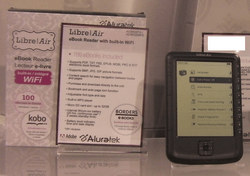 The other new ereader is the Libre Aire. It’s based on the same 5″ screen as the Libre Pro, and it has basically the same feature set . But it also comes with Wifi and swipe pad (which replaced the arrow keys). It should be available in March and cost less than the Libre Color.
The other new ereader is the Libre Aire. It’s based on the same 5″ screen as the Libre Pro, and it has basically the same feature set . But it also comes with Wifi and swipe pad (which replaced the arrow keys). It should be available in March and cost less than the Libre Color.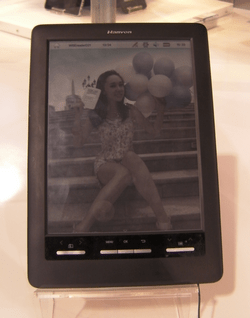
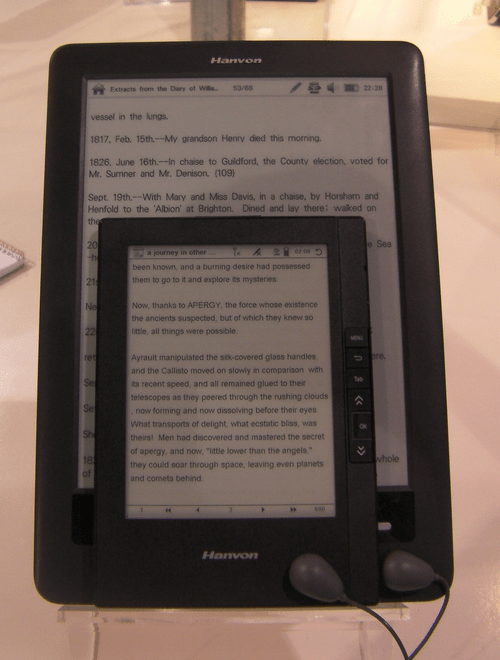
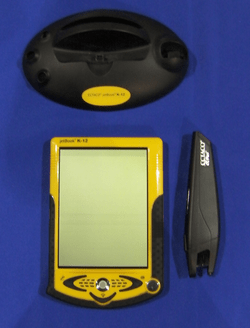
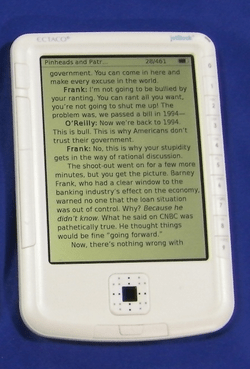 And that’s just a small measure of what it can do. It’s due out this quarter and the retail is projected to be $249.
And that’s just a small measure of what it can do. It’s due out this quarter and the retail is projected to be $249.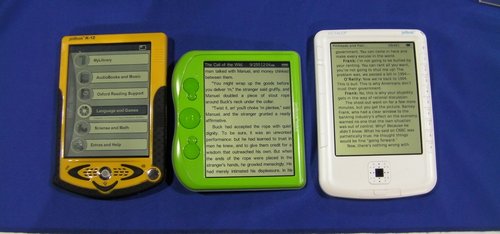
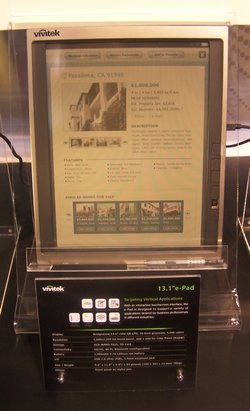 One of the things I was looking forward to at CES was getting a chance to look at Bridgestone’s QR-LPD screens. This is a type of color epaper technology that’s been under development for quite a few years and is only just beginning to hit the market.
One of the things I was looking forward to at CES was getting a chance to look at Bridgestone’s QR-LPD screens. This is a type of color epaper technology that’s been under development for quite a few years and is only just beginning to hit the market. 

 NEC had a pair of new tablet devices at CES this year. There was one with a single screen and another with 2 screens. Really the only difference was that dual screen unit had a second screen attached; all the ports, slots, and buttons were the same on both devices.
NEC had a pair of new tablet devices at CES this year. There was one with a single screen and another with 2 screens. Really the only difference was that dual screen unit had a second screen attached; all the ports, slots, and buttons were the same on both devices. 
